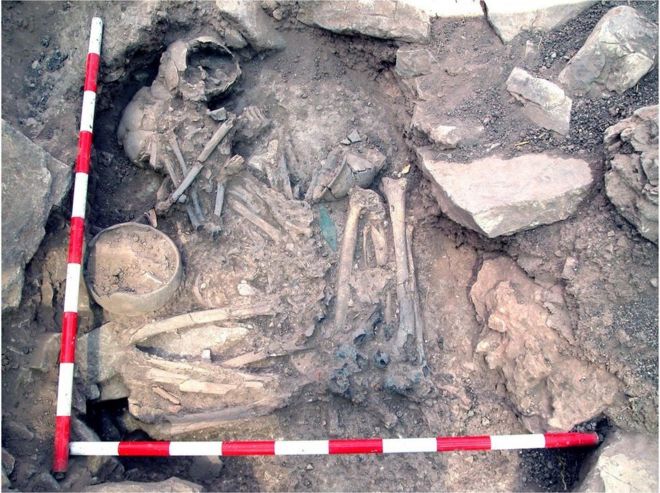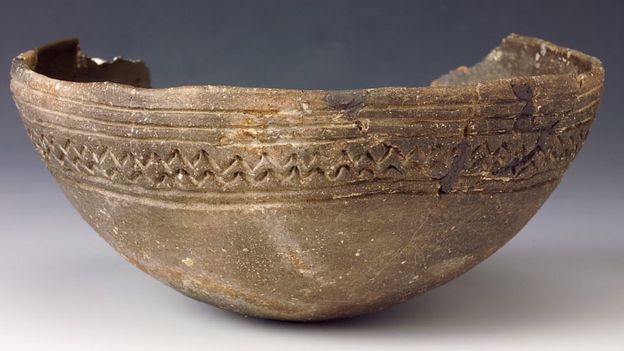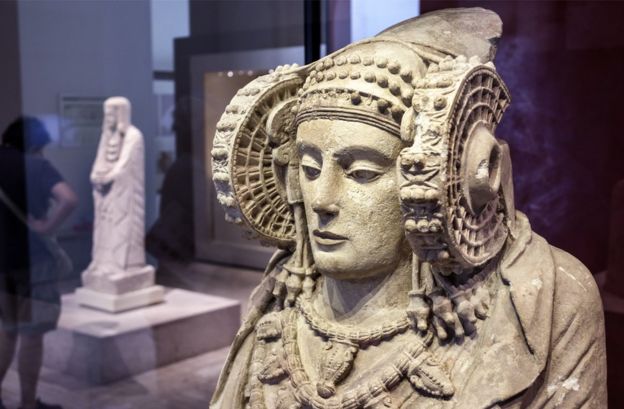Migration from Central Europe transformed the genetic make-up of people in Spain during the Bronze Age, a study reveals.
DNA proof demonstrates the vagrants gushed over the Pyrenees, supplanting existing male heredities over the district inside space of 400 years.
It stays indistinct whether savagery assumed a job or whether a male-driven social structure was progressively critical.
The outcome originates from the broadest investigation of its sort.
Scientists recreated the populace history of Iberia (present-day Spain, Portugal, Gibraltar, and Andorra) more than 8,000 years - the greatest cut of time handled by a solitary antiquated DNA think about. The area has been an intersection for various societies after some time.
They removed and broke down DNA from 403 Iberians who lived between 6,000 BC and AD 1,600.
The Bronze Age transients followed a portion of their heritage to Neolithic (Stone Age) ranchers found all through Europe - including Spain - while whatever is left of their hereditary make-up resembled that of individuals living at the time on the Russian steppe.
This steppe family line was acquainted with Europe by traveling herders who moved west from Asia and the eastern edges of Europe.
Stone Age crisis
One of the triggers may have been an emergency that caused populace numbers to dive in Europe towards the finish of the Neolithic time frame (which went before the Bronze Age). Late examinations recommend plague may have assumed a job.
As the steppe individuals moved west, they got components of culture from individuals they blended with en route. In Central Europe, one such blended culture known as the Bell Beaker custom shaped. The Beakers and their relatives may have built up profoundly stratified (unequal) social orders in Europe, including Iberia - where they begin diverting up from 2,500BC.
Picture copyright: MAN/MARIO TORQUEMADA Bronze Age Bell Beaker stoneware from Camino de las Yeseras close Madrid
The specialists took a gander at the Y chromosome - a bundle of DNA goes down pretty much unaltered from dad to the child. It very well may be utilized to follow male-line legacy. By about 2,000BC, nearby Y chromosome heredities had been wiped out from the Iberian quality pool, for those conveyed by the newcomers.
At the point when the group investigated DNA from over the genome - the full supplement of hereditary material found in the cores of cells - they found that later Iberians followed 40% of their family to the new populace.
The newcomers - of Bell Beaker inception - brought advancements, for example, bronze-working (counting the production of bronze weapons) and were presumably riding steeds. These may have given them a military favorable position over Stone Age cultivating social orders, yet in addition, likely presented higher economic wellbeing on guys conveying these conventions.
Patterns of inheritance
Co-creator Iñigo Olalde, from Harvard Medical School, US, stated: "It would be a misstep to bounce to the end that Iberian men were slaughtered or coercively dislodged." He included: "The archeological record gives no unmistakable proof of a burst of viciousness in this period."
Rather, the high economic wellbeing of male newcomers may have been connected to more noteworthy conceptive achievement. "Their male relatives would have acquired the riches and economic wellbeing, and themselves additionally had a lot higher conceptive achievement," Dr. Olalde revealed to BBC News.
A framework that stressed male power and legacy could have been vital: "A patrilineal and conceivably man-centric social structure would additionally enhance the watched examples, as perhaps just the principal conceived child would acquire the group's properties, though alternate children would move out and endeavor to set up their very own tribes, further spreading their Y ancestries over new domains," he said.
A significantly increasingly extraordinary example of substitution happened at much a similar time in Britain, where Beakers supplanted 90% of the general family that was there before they arrived.
Fortified settlements
"In any event in the east and the south-east, we see an adjustment in the settlement designs... which keeps going until the entry of the Romans," said co-creator Dr. Carles Lalueza-Fox, from the University of Barcelona.
In this district, the Iron Age Iberian culture built up invigorated settlements on high ground.
"The Iberians lived in slope settlements and were a brutal society, organized along ancestral lines. Something unmistakably changes the social structure that existed in the late Neolithic."
Picture copyrightJEFF GREENBERG The Dama de Elche was a result of the Iberian culture on Spain's eastern coast
Seeing human stays from a prior period, the examination found that Stone Age seeker gatherers who followed a critical level of their lineage to a portion of Europe's most punctual pilgrims made due in southern Spain until the spread of cultivating 6,000 years back.
The group additionally contemplated genome information from Moorish Spain (AD 711-1492), when parts of the promontory were under the control of Muslim emirs of North African root.
Picture copyright Getty IMAGES The Alhambra castle in Granada, the seat of the last Muslim emirate in Iberia
North African impact was available in Iberia from in any event the Bronze Age. In any case, the scientists found a sensational move in the hereditary make-up of individuals from Moorish-controlled locales after the medieval "Reconquista", when Christian armed forces seized back control of the promontory. The heroes ousted numerous Muslims, albeit some were permitted to remain on the off chance that they changed over to Christianity.
While numerous Moorish people examined in the investigation appear to have been a 50:50 blend of North African and Iberian family line, North African parentage in the promontory today midpoints just 5%.
Current Iberians determine about half of their family from Neolithic ranchers, 25% from old seeker gatherers, and 20% from the steppe individuals.
Faces from Iberia's past
Severed Heads
Picture copyright: ARCHIVO MUSEU D'ARQUOLOGIA DE CATALUNYA Separated Iberian head presumably displayed as a war trophy. A gap in the temple denotes where a colossal nail was pounded in
Individuals from the Iron Age Iberian development of Spain's east coast by and large incinerated they're dead. The incineration procedure kept researchers from separating DNA from these remaining parts. While the way of life was in charge of incredible centerpieces, for example, the Dama de Elche design, the Iberians additionally had a brutal side. They pounded expansive nails through the separated heads of adversaries slaughtered in battle and displayed them in open spaces as war trophies. Nearly 40 such heads were found in the Iberian settlement of Ullastret, enabling researchers to investigate DNA from them.
African Ancestors
Two entombments in the investigation were uncovered to have large amounts of dark African lineage. Both of the people were from Granada in southwest Spain, where the last Muslim emirate held out until it was vanquished by Christians in 1492. One of the general population originated from a tenth Century graveyard where bodies were covered in the Islamic convention - situated toward Mecca. The other individual is from the Sixteenth Century, after the Christian victory of Granada. This lady is believed to be from the Morisco people group - previous Muslims who changed over to Christianity (just to be ousted from Spain later on).
Germanic migrants
After the fall of the Roman Empire, meandering clans from northern and eastern Europe spilled into Iberia. The Visigoths, who talked a language identified with Swedish, German and English, expected control of the district. They established the Spanish government that proceeds with today and presented laws that shaped the premise of those utilized by later Christian kingdoms. Entombments from Pla de l'Horta in northeastern Spain incorporate a mother and little girl of Visigothic source. Their genomes recommend they had ongoing lineage from Eastern Europe, while DNA from the cell's batteries, or mitochondria - which is passed pretty much unaltered from mother to youngsters - is of a sort related with East Asian populace. It's an indication of the hereditary intricacy of the Eastern steppe district where their foundations lay.






No comments:
Post a Comment
Paste Your Website and Article Link To Create Do-Follow Backlink